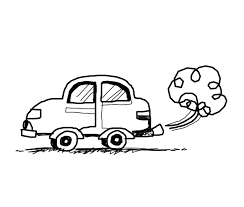“It’s an approach from the 1960s. Far too many new developments are still all about the car.”
“New housing and retail development planned around public transport is successfully creating better, more economically productive places.”
.
We know that building more roads to ‘ease congestion’ just creates more congestion:
More roads = more traffic = more pollution – Vision Group for Sidmouth
This understanding has been around for some time now:
Building Bigger Roads Actually Makes Traffic Worse
The concept is called induced demand, which is economist-speak for when increasing the supply of something (like roads) makes people want that thing even more. Though some traffic engineers made note of this phenomenon at least as early as the 1960s, it is only in recent years that social scientists have collected enough data to show how this happens pretty much every time we build new roads.
What’s Up With That: Building Bigger Roads Actually Makes Traffic Worse | WIRED
Expanding highways and building more roads actually makes traffic worse – Curbed
.
We also know that building more housing estates creates more congestion.
Here’s a warning from the Campaign for Better Transport (CfBT) from 2015:
New housing developments could increase traffic congestion, warn campaigners
Writing to communities minister Greg Clark, CfBT chief executive Stephen Joseph said that without stronger planning policies relating to public transport supporting development, new housing, retail and office development could congest roads.
 CfBT say land-use planning and transport policies that support public transport, walking and cycling should be used to promote development that doesn’t generate more traffic. The group’s new report – Getting there: How sustainable transport can support new development – gives examples of where this has been successful, including Shawfair, Scotland’s first new town in 50 years, and examples of where schemes are being implemented to reduce car dependency, such as Birmingham’s Mobility Action Plan.
CfBT say land-use planning and transport policies that support public transport, walking and cycling should be used to promote development that doesn’t generate more traffic. The group’s new report – Getting there: How sustainable transport can support new development – gives examples of where this has been successful, including Shawfair, Scotland’s first new town in 50 years, and examples of where schemes are being implemented to reduce car dependency, such as Birmingham’s Mobility Action Plan.
Joseph said: “You can tackle housing shortages and support new development without resorting to more sprawling suburbs, acres of car parks and big new roads. Our research shows that across the country new housing and retail development planned around public transport is successfully creating better, more economically productive places. There is clear evidence that when people are offered high-quality public transport a lot of them use it. National government, local authorities and developers urgently need the vision, skills and support to make this kind of development the norm.”
New housing developments could increase traffic congestion, warn campaigners | The Planner
.
The problem is that this isn’t happening.
A report out last year from University College London
New UK housing ‘dominated by roads’
A report says too many highways engineers are still approving roads that do not fully account for pedestrians and cyclists. It follows a government survey suggesting an increase in public concern over the impact of cars on people’s health and the environment.
Its author, Prof Matthew Carmona, told BBC News: “Far too many new developments are still all about the car. It’s all about making sure cars don’t need to slow down. Pedestrians and cyclists just have to get out of the way. It’s an approach from the 1960s. We should be allowing people to walk and cycle to get to local facilities instead of having to get out the car every time. But car-dominated developments are still going up.”
.
And it’s happening in every district in Devon – despite high-sounding commitments to ‘sustainable development’.
This is the latest example:
Fears a busy area will become ‘completely and utterly’ gridlocked have been voiced as housing development continues in Sticklepath.
Fears over gridlock chaos as new houses go up in Devon town – Devon Live
This is from last year, ‘infrastructure’ being code for ‘more roads’:
Landscape changing plans for Newton Abbot include 1,000 homes and infrastructure – Devon Live
Devon Live – More than 1,000 homes and new infrastructure planned | Facebook
And another from last year, where ‘sustainable’ means ‘more cars’:
Finally, this example is from 2013 in Teignmouth:
Development will only worsen traffic situation | Mid-Devon Advertiser
.
Meanwhile in East Devon, the idea of ‘more Cranbrooks’ is surfacing:
But there are alternatives to plonking housing estates in green fields surrounded by new roads:
The 20-minute neighbourhood – Vision Group for Sidmouth
The questions around Low-Traffic Neighbourhoods – Vision Group for Sidmouth.